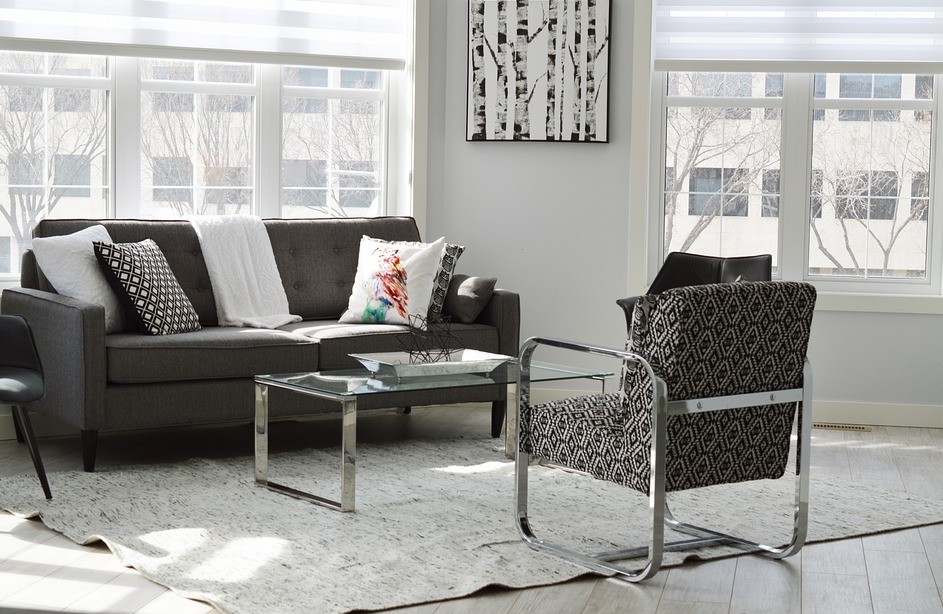
Proportions matter because furnishing a room is more involved than simply placing a few pieces of furniture in a space. You need to consider not only the proportional relationship between the pieces themselves, but to the space that contains them. A room looks and feels right when the proportions are good, and there’s neither too little nor too much furniture. If furniture is too big, the flow of the room can feel awkward. If it’s too small, the space won’t feel cosy or inviting. For those of us who rent our property for short term accommodation, these tips can help ensure we present our place or space in the best light.
Common mistakes include having all the furniture and furnishings in a room the same height, colour and style. This is easily rectified. A tall floor lamp, for example, can add some height to a corner, while providing a lovely light source. A tall cabinet or bookcase can add visual interest as well as handy storage. One of the easiest ways to assess whether a sofa, dining table or bed will suit the size of your room is to lay it out on the floor. This will give you a sense of how much floor space the piece will take up. Living with this template for a few days will give you a definite feel for how it will be to live with the piece.
Living rooms can be tricky to get right, especially in open-plan spaces. If the room is your main television viewing space, then you’ll need to factor in technology as well as furniture. Is the TV too big for the room? Is the entertainment unit balanced with the size of the TV, and the room as a whole? A common mistake is to have a small entertainment unit with a large TV – it should be the other way around. Also, consider whether the sofa is the correct distance from the TV for viewing comfort. It should be about 2.5 times the screen width in distance away, and no more than 5 metres. The centre of the TV should be about 1 to 1.1 metres from the floor.
For living rooms, the furniture arrangement should be conducive to conversation. Two sofas facing each other or a U-shaped arrangement are ideal. The coffee table should also be the right height for the sofa. You should be easily able reach the coffee table from a seated position so you can rest a cup of tea or a glass of wine.
One of the main considerations in the bedroom is the size of the bedside table in proportion to the bed. For a king-size bed, go for a large-scale beside table of about 70-90 centimetres in width, depending on the size of your bedroom. For a queen-size bed, a bedside table of around 50-60 centimetres is ideal.
When pendant lamps are hung too high or low, they can look completely out of place in a room. There are a few rules that can help when hanging pendants. For kitchen benches, hang lights around 70-80 centimetres above benchtops. For your dining table, sit pendants at 75 centimetres above table height to create an intimate and cosy dining space. For entries and hallways where people will be walking beneath the pendant lights, space allowing, the ideal hanging height is 240 centimetres from floor level.
Rugs are a great way to bring a furniture grouping together. They provide a border for furniture to sit on and can help you create individual dining and living zones in an open-plan room where furniture has a tendency to ‘float’. Ideally rugs should sit under the front legs of the sofa and occasional chairs – this helps visually link the pieces together.
Leave a Reply
You must be logged in to post a comment.